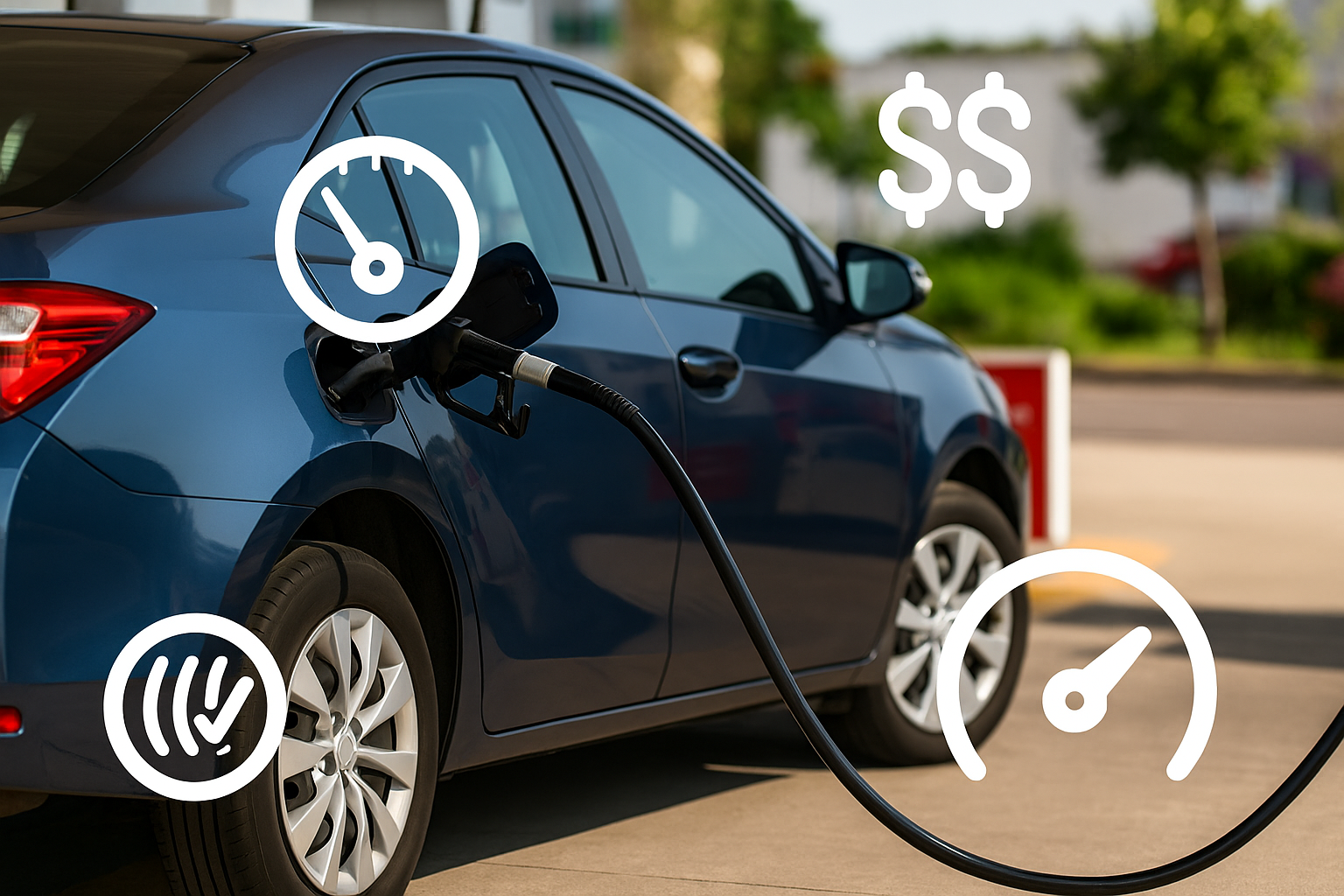With fuel prices fluctuating and daily commutes draining your wallet, improving fuel efficiency has never been more important. The good news is, you don’t need to drive an EV or hybrid to get more out of every gallon. Whether you drive a sedan, SUV, or truck, these practical tips can help you save fuel—and money—starting today.
Here are 8 fuel efficiency hacks to keep more cash in your pocket at every fill-up.
1. Keep Your Tires Properly Inflated
Underinflated tires create more rolling resistance, which forces your engine to work harder. According to the U.S. Department of Energy, you can improve fuel economy by up to 3% simply by keeping your tires inflated to the manufacturer’s recommended PSI.
Check tire pressure at least once a month
Use a digital gauge and compare against your owner’s manual
Don’t forget to check your spare, too
2. Lighten Your Load
Every extra 100 pounds in your car can reduce fuel efficiency by around 1%, especially in smaller vehicles. Remove unnecessary items from your trunk or cargo area—gym bags, tools, or even that spare stroller.
Ditch roof boxes or bike racks when not in use
Avoid hauling heavy gear unless necessary
Clean out your vehicle regularly
3. Use Cruise Control on Highways
Maintaining a consistent speed helps reduce fuel waste caused by speeding up and slowing down. On flat highways, cruise control can improve gas mileage by 7–14%.
Best used on long, level stretches of road
Avoid using cruise in hilly or heavy traffic areas
Adaptive cruise control is even better for efficiency
4. Drive Smoothly and Avoid Aggressive Acceleration
Quick starts, hard braking, and rapid acceleration can lower gas mileage by up to 30% on highways and 40% in stop-and-go traffic. Driving smoothly and anticipating traffic flow helps keep fuel usage efficient.
Accelerate gradually
Coast to red lights instead of braking hard
Avoid tailgating, which leads to unnecessary braking
5. Limit Idling Time
Idling burns more fuel than you might expect—up to ½ gallon per hour. If you’re waiting more than a minute, it’s more efficient to turn off the engine.
Turn off the car in parking lots or when waiting for someone
Use remote start features wisely
Some modern cars come with auto start-stop systems—don’t disable it if fuel savings are your goal
6. Use the Right Motor Oil
Using oil that isn’t recommended for your vehicle can hurt engine efficiency. Make sure you’re using manufacturer-approved oil with the correct viscosity.
Look for motor oils labeled “energy conserving”
Follow your service schedule for oil changes
Ask your mechanic to double-check oil specs during maintenance
7. Watch Your Speed
Fuel economy tends to drop sharply above 50 mph. For every 5 mph over that, you’re paying an equivalent of $0.20 more per gallon.
Keep highway speeds around 60–65 mph when possible
Use fuel economy apps or displays in your car to monitor efficiency
Drive in Eco Mode if your vehicle has it
8. Plan Efficient Routes
Multiple short trips from a cold engine use more fuel than one longer trip. Planning your errands or commute can help you reduce unnecessary miles and optimize fuel usage.
Combine errands into one trip
Use navigation apps that account for traffic and terrain
Avoid peak congestion times whenever possible
Bonus Tip: Use Apps to Track Prices and Efficiency
Use apps like GasBuddy, Upside, or Waze to find the cheapest gas stations near you. Some apps also track your mileage so you can monitor which habits are helping or hurting your fuel usage.
Final Thoughts: Small Changes, Big Savings
Improving fuel efficiency isn’t just about saving money—it also means reducing emissions and protecting your engine. The best part? Most of these hacks require no special tools, upgrades, or major lifestyle changes.
Start with just two or three habits this week, and you’ll likely see results at your next trip to the pump. With gas prices expected to remain volatile in 2024 and beyond, these small adjustments can lead to big savings over time.

